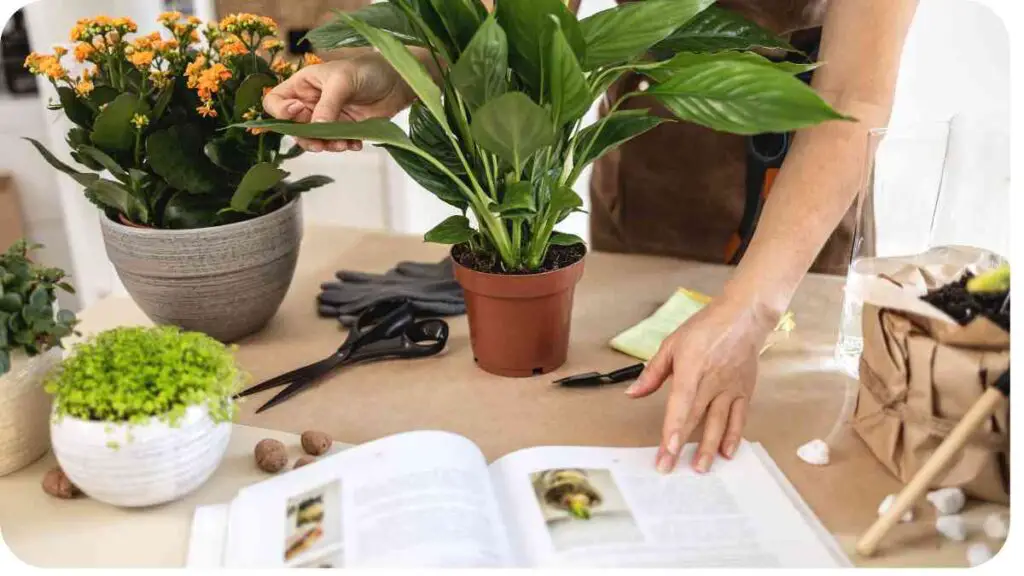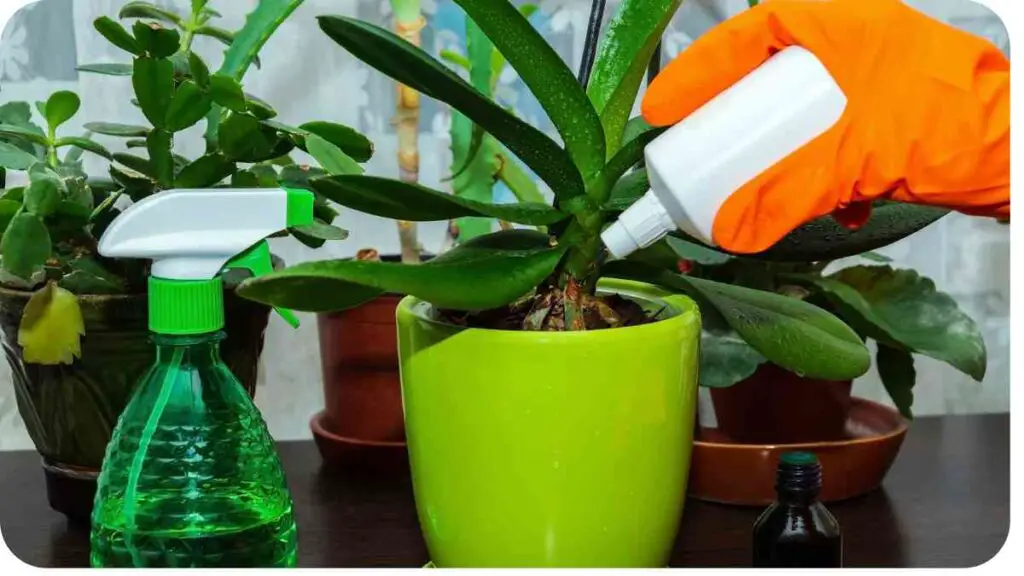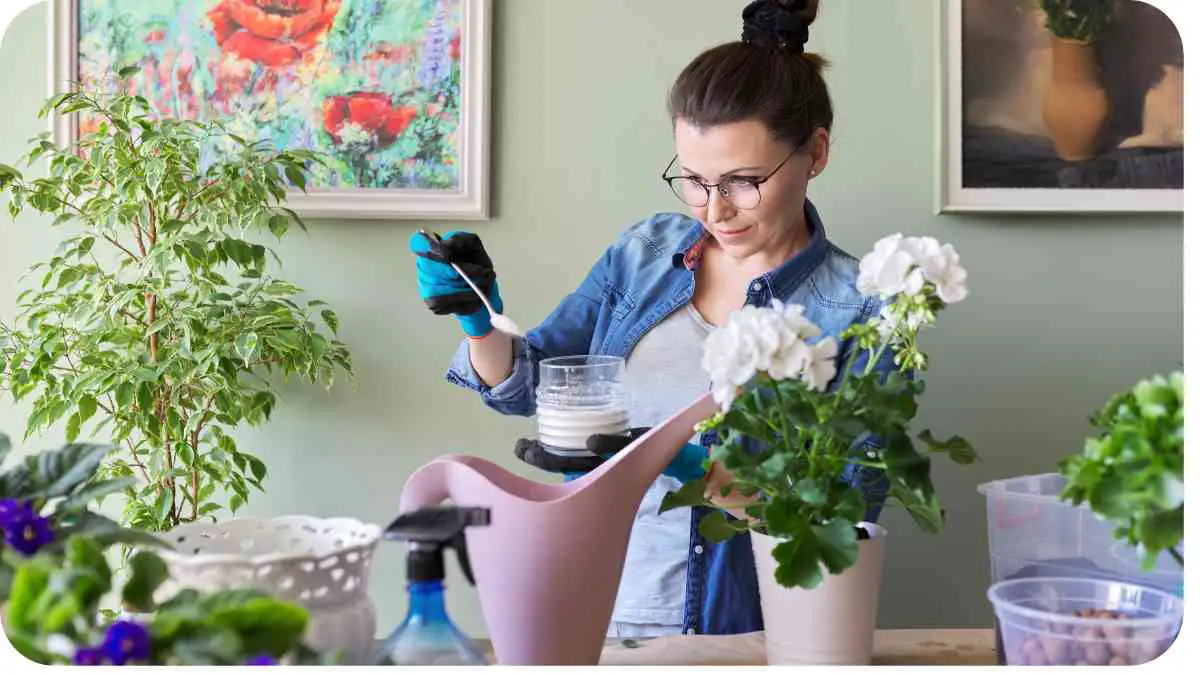Houseplants bring life and vibrancy to our indoor spaces, but to thrive, they need proper care and nutrition. One crucial aspect of this care is fertilization. However, many plant enthusiasts wonder:
How much does it cost to fertilize houseplants effectively? In this comprehensive guide, we’ll explore the various factors influencing fertilizer costs, compare DIY and commercial options, and provide practical tips to help you maintain healthy houseplants without breaking the bank.
| Key Takeaways |
|---|
| 1. Proper fertilization is essential for the health and vitality of houseplants. |
| 2. Consider factors such as plant type, size, and fertilization frequency when calculating fertilizer costs. |
| 3. Organic and synthetic fertilizers offer different benefits, so choose based on your preferences and plant needs. |
| 4. DIY fertilizers can be cost-effective alternatives to commercial products, but ensure proper nutrient balance. |
| 5. Monitor your plants for signs of over-fertilization and adjust your fertilization practices accordingly. |
2. Why Fertilize Houseplants?

Houseplants, like any living organisms, require essential nutrients to grow and flourish. While potting soil provides some nutrients initially, these become depleted over time as plants absorb them. Fertilizers replenish these nutrients, ensuring that your plants remain healthy and vibrant. Fertilizing also promotes robust growth, encourages blooming, and enhances overall plant resilience against pests and diseases.
Selecting the right fertilizer is crucial for potted plants’ health and growth. It’s essential to consider the specific needs of your plants to ensure optimal nourishment. Check out our guide on choosing the best fertilizer for potted plants for expert tips and recommendations.
3. Types of Houseplant Fertilizers
Organic vs. Synthetic Fertilizers
| Aspect | Organic Fertilizers | Synthetic Fertilizers |
|---|---|---|
| Composition | Derived from natural sources such as compost, manure, or plant byproducts | Manufactured from chemical compounds to provide specific nutrient ratios |
| Nutrient Availability | Slow-release, providing nutrients gradually over time | Quick-release, delivering nutrients immediately |
| Environmental Impact | Generally more eco-friendly and sustainable | May contain harsh chemicals harmful to the environment |
Slow-release vs. Liquid Fertilizers
| Aspect | Slow-release Fertilizers | Liquid Fertilizers |
|---|---|---|
| Application Frequency | Applied less frequently, usually every few months | Applied more frequently, typically every 2-4 weeks |
| Convenience | Requires less frequent application, ideal for busy individuals | Offers immediate nutrient availability, suitable for plants with high nutrient demands |
4. Factors Affecting Fertilizer Costs
Plant Size and Type
The size and type of your houseplants significantly influence fertilizer costs. Larger plants require more fertilizer, while different species may have varying nutrient requirements. For example, tropical plants with high growth rates may need more frequent fertilization compared to slow-growing succulents.
Maintaining the quality of potting soil is key to sustaining healthy houseplants. Knowing when to replace old soil can prevent nutrient depletion and support plant vitality. Learn more about the frequency of potting soil replacement to optimize your indoor gardening efforts.
Fertilizer Quality and Brand
The quality and brand of fertilizer you choose also impact costs. Premium brands or specialized formulations may come with a higher price tag but often offer superior nutrient blends and enhanced plant benefits. However, budget-friendly options can still provide adequate nutrition for your plants if used correctly.
Frequency of Fertilization
The frequency of fertilization directly affects your overall fertilizer expenses. Plants that require more frequent feeding will incur higher costs over time. Understanding your plants’ needs and following a consistent fertilization schedule can help you manage expenses effectively.
Preventing root rot is crucial for maintaining the health and vitality of your houseplants. Our comprehensive guide provides actionable tips and strategies for avoiding root rot, ensuring your plants thrive in a healthy and nourishing environment.
Calculating Fertilizer Costs
Cost per Application
To determine the cost per application, you’ll need to consider the price of the fertilizer product and the amount needed for each application. Most fertilizers provide instructions on usage rates based on the size of the plant or container. By dividing the total cost of the fertilizer by the number of applications it provides, you can calculate the cost per application.
Annual Fertilizer Expense
Calculating your annual fertilizer expense involves estimating the number of times you’ll need to fertilize your houseplants throughout the year and multiplying it by the cost per application. This figure gives you a clear picture of your yearly investment in plant nutrition.
6. Cost Comparison: DIY vs. Commercial Fertilizers

DIY Fertilizer Options
Creating your own fertilizers from household items or natural ingredients can be a cost-effective alternative to commercial products. Common DIY options include compost tea, banana peel fertilizer, or eggshell powder. While these methods may require more effort, they can significantly reduce your fertilizer expenses.
Commercial Fertilizer Products
Commercial fertilizers offer convenience and precision in nutrient delivery, but they come at a price. However, the market offers a wide range of products to suit every budget and preference. From budget-friendly general-purpose fertilizers to premium formulations tailored to specific plant needs, there’s something for everyone.
Revitalizing old potting soil can extend its usability and promote plant well-being. Discover effective techniques for regenerating aging potting soil to save on costs and reduce waste. Keep your indoor garden thriving with our comprehensive soil regeneration guide.
Tips to Minimize Fertilizer Costs
Proper Application Techniques
Using fertilizers efficiently is key to minimizing costs. Follow label instructions carefully to avoid over-fertilizing, which not only wastes product but can also harm your plants. Measure the appropriate amount of fertilizer for each application, and water thoroughly afterward to distribute nutrients evenly.
Using Fertilizer Alternatives
Explore alternative methods of providing nutrients to your houseplants. For example, incorporating organic matter like compost into your potting mix can gradually release nutrients over time, reducing the need for additional fertilization. Additionally, consider using natural supplements such as seaweed extract or fish emulsion to supplement your plants’ nutrient intake.
8. Case Studies: Fertilizer Costs in Practice

Small Houseplant Collection
Let’s consider a scenario where you have a small collection of houseplants consisting of a mix of tropical foliage plants and flowering varieties. With careful planning and budgeting, you can estimate your fertilizer costs for the year. Assuming you use a moderately priced liquid fertilizer and follow a biweekly fertilization schedule during the growing season, your annual fertilizer expenses would be reasonable.
| Aspect | Details |
|---|---|
| Number of Plants | 10 |
| Fertilizer Type | Liquid |
| Fertilization Schedule | Biweekly during growing season |
| Cost per Fertilizer | $10 (example) |
| Annual Expense | $10 (cost per application) x 26 (number of applications per year) = $260 |
Large Indoor Garden
In contrast, imagine you have a large indoor garden filled with a diverse range of plants, including high-maintenance specimens like orchids and carnivorous plants. Given the higher number of plants and their specific nutrient requirements, your fertilizer expenses would naturally be more substantial.
Choosing the right potting mix is essential for providing the ideal growing environment for your flowers. Explore our comprehensive guide to selecting the best potting mix to ensure your plants receive the necessary nutrients and support for vibrant blooms.
| Aspect | Details |
|---|---|
| Number of Plants | 50 |
| Fertilizer Type | Combination of slow-release granules and liquid supplements |
| Fertilization Schedule | Varied based on plant needs |
| Cost per Fertilizer | Varies based on product selection |
| Annual Expense | Estimated based on individual product costs and application frequency |
Conclusion
Fertilizing your houseplants is an essential aspect of their care regimen, ensuring they receive the necessary nutrients for healthy growth and development. While the cost of fertilization may vary depending on factors such as plant size, fertilizer type, and frequency of application, there are strategies you can employ to minimize expenses without compromising on plant health.
By understanding your plants’ specific needs, choosing the right fertilizer products, and employing efficient application techniques, you can effectively manage your fertilizer costs. Whether you opt for DIY solutions or commercial products, the goal is to provide your houseplants with the nutrients they need to thrive while staying within your budget.
Remember to monitor your plants’ growth and adjust your fertilization practices accordingly. With proper care and attention, you can enjoy lush, vibrant houseplants without breaking the bank.
Frequently Asked Questions (FAQs)
- How often should I fertilize my houseplants?
- The frequency of fertilization depends on factors such as plant type, growth rate, and environmental conditions. Generally, most houseplants benefit from monthly fertilization during the growing season.
- Can I use regular outdoor plant fertilizer for my indoor houseplants?
- While outdoor plant fertilizers may contain similar nutrients, they are often formulated differently and may not be suitable for indoor use. It’s best to use fertilizers specifically designed for indoor plants to avoid potential issues.
- Are organic fertilizers better than synthetic ones?
- Both organic and synthetic fertilizers have their advantages and disadvantages. Organic fertilizers tend to be more environmentally friendly and promote soil health, while synthetic fertilizers offer precise nutrient ratios and quick results. Choose the option that aligns with your gardening principles and plant needs.
- What should I do if I notice signs of over-fertilization in my plants?
- If your plants show signs of over-fertilization, such as wilting, yellowing leaves, or stunted growth, stop fertilizing immediately and flush the soil with water to remove excess nutrients. Allow the plant to recover in a well-draining potting mix before resuming fertilization at a reduced rate.
Further Reading
- Fertilizing Houseplants 101: This comprehensive guide by Homestead Brooklyn provides valuable insights into the fundamentals of fertilizing houseplants, including tips on choosing the right fertilizer and proper application techniques.
- Fertiliser for Houseplants – Gardens4You: Gardens4You offers a selection of fertilizers specifically formulated for houseplants. Learn about different fertilizing options and how to optimize plant nutrition for indoor gardening success.
- Organic Nutri Shots for Indoor Plants – Bombay Greens: Explore Bombay Greens’ organic Nutri Shots, designed to provide essential nutrients to indoor plants in a convenient liquid form. Discover the benefits of organic fertilization for your indoor greenery.
FAQs
How often should I fertilize my houseplants?
Fertilizing frequency depends on factors like plant type, growth rate, and season. As a general guideline, aim for monthly fertilization during the growing season.
Can I use regular outdoor plant fertilizer for my indoor houseplants?
While outdoor fertilizers may contain similar nutrients, they may not be suitable for indoor use. Opt for fertilizers specifically formulated for indoor plants to ensure proper nutrient balance and avoid potential issues.
Are organic fertilizers better for houseplants than synthetic ones?
Both organic and synthetic fertilizers have their advantages. Organic fertilizers are often more environmentally friendly and promote soil health, while synthetic fertilizers offer precise nutrient ratios. Choose based on your gardening principles and plant needs.
What should I do if I notice signs of over-fertilization in my houseplants?
If you observe symptoms like wilting or yellowing leaves, stop fertilizing immediately and flush the soil with water to remove excess nutrients. Allow the plant to recover in fresh soil before resuming fertilization at a reduced rate.
How can I prevent fertilizer buildup in my houseplant soil?
To avoid fertilizer buildup, use a balanced fertilizer, dilute it according to instructions, and flush the soil periodically with water to remove accumulated salts. Additionally, consider using organic fertilizers that break down more slowly and are less likely to cause buildup.

For 15 years, Hellen James has worked in the gardening industry as an expert and landscape designer. During her career, she has worked for a variety of businesses that specialize in landscaping and gardening from small firms to large corporations.

